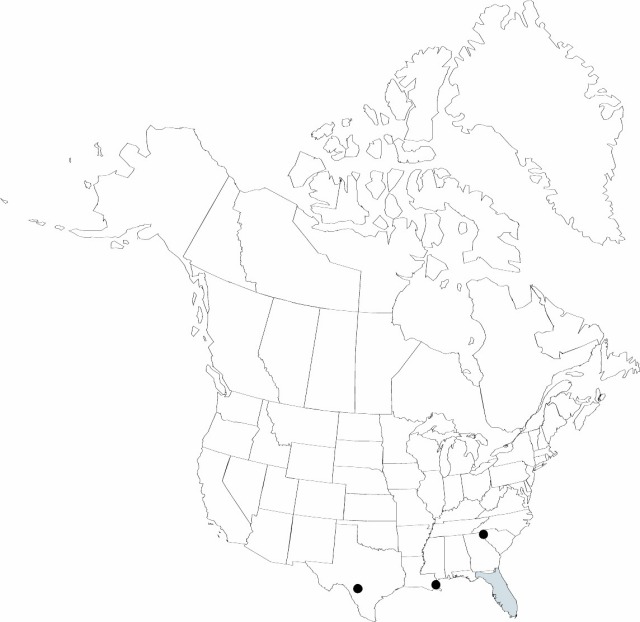Canna indica
Sp. Pl. 1: 1. 1753.
Rhizomes fleshy. Leaves: sheath glabrous; blade narrowly ovate to ovate, 20–60 × 10–30 cm, base obtuse to narrowly cuneate, apex shortly acuminate to acute, abaxially and adaxially glabrous. Inflorescences racemes, sometimes branched, bearing 1-flowered to 2-flowered cincinni, 6–20 per inflorescence; primary bracts to 15 cm; secondary bracts to 9 cm; floral bracts persistent, broadly obovate to narrowly (ob) ovate (-triangular), 0.5–3 × 0.5–1.5 cm, apex entire, often glaucous; bracteoles (ovate-) triangular, 0.5–2 × 0.3–0.8 cm, apex entire. Flowers red to yellow-orange, never pure yellow (except in some hybrid cultivars), 4.5–7.5 cm; pedicels 0.2–1 cm, to 1.5 cm in fruit; sepals narrowly triangular, 0.9–1.7 × 0.2–0.5 cm; petals erect, 4–6.5 cm, tube 0.5–1.5 cm, lobes lanceolate to narrowly oblong, 3.5–5 × 0.4–0.7 cm; staminodes 3–4, narrowly obovate to spatulate, 4.5–7.5 cm, free part 0.3–0.5 cm wide, apex rounded, acute, or cleft; labellum reflexed, narrowly oblong, approximately equal to other staminodes. Capsules ellipsoid to nearly globose, 1.5–3 × 1.5–2 cm. Seeds black, globose to nearly globose, 5–8 × 4–6.7 mm diam. 2n = 18.
Phenology: Flowering primarily spring–summer; fruiting summer–early fall.
Habitat: Often, if not always, in secondary growth and waste places
Elevation: 0–100 m
Distribution

Introduced; Apparently, Fla., La., S.C., Tex.
Discussion
Canna indica is probably native to neotropics and is now common throughout tropics and subtropics.
Selected References
None.